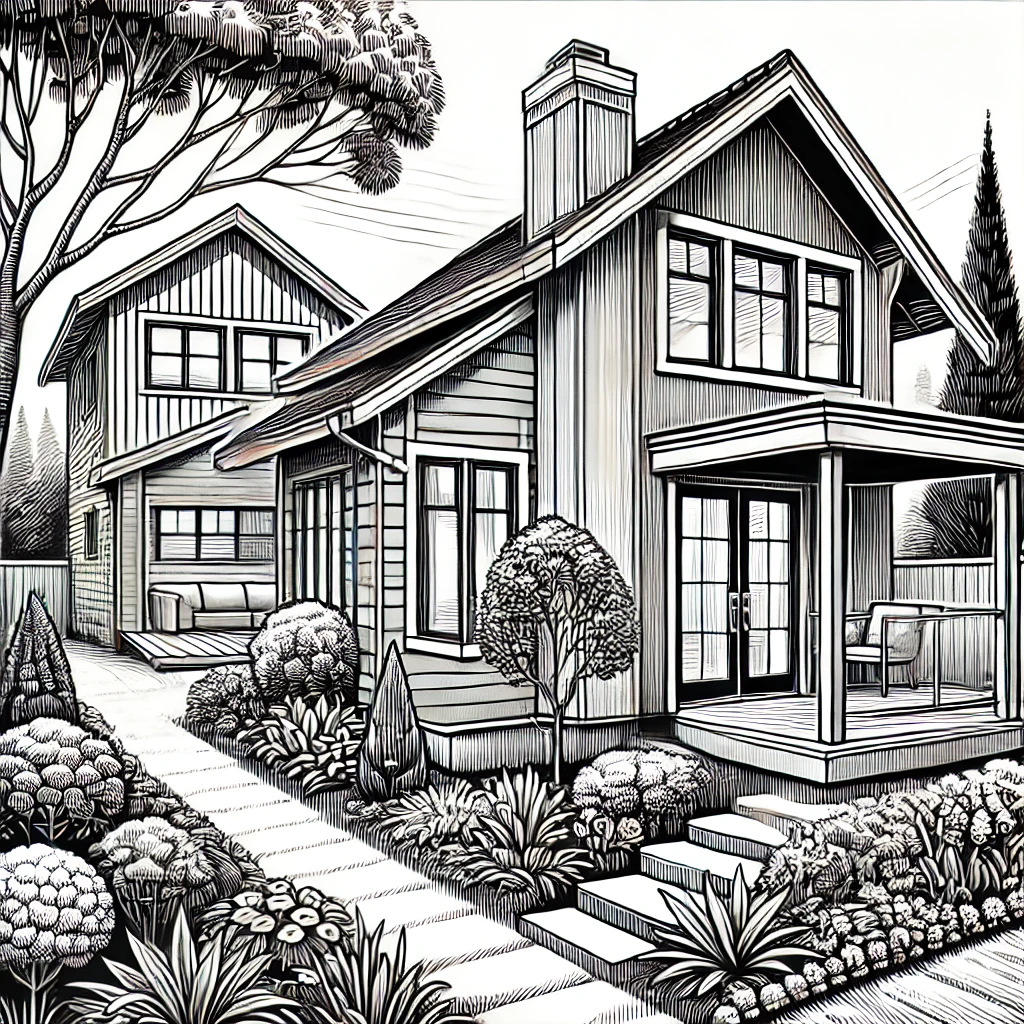Looking to maximize your multi-family property’s potential?
Adding Accessory Dwelling Units (ADUs) could be the answer.
ADUs can boost property value, increase rental income, and offer flexible living arrangements.
Here’s everything you need to know about ADUs for multi-family properties.
What Are ADUs for Multi-Family Properties?
ADUs are Accessory Dwelling Units, which can be added to multi-family properties in many cases.
They can be attached or detached and offer additional living space or rental opportunities. For multi-family properties, ADUs can be garage conversions, basement apartments, or newly built structures.
Multi-Family Properties and Qualifying For An ADU
Prior to 2020, only single-family lots were approved for ADUs.
Things are different now though, and if you have a multi-family property you can possibly add multiple ADUs to your lot.
To qualify for this, your property must consist of two or more residential dwellings that are attached.
The other main requirement is that the lot must be in a residential zone.
How Many ADUs Can You Build?
The number of ADUs you can build on a multi-family lot depends on the jurisdiction.
As a baseline, you will be allowed to build one ADU using the existing structure (accessory space only) or two detached ADUs, but some jurisdictions will only approve detached ADUs.
Uncovered parking space cannot be used, and accessory space is only allowed to be converted in the primary structure, which is space that is currently not permitted as living space.
Apartment Building Considerations
If you have a building with 8 or more units, you could be allowed to build a number of ADUs equal to 25% of the number of units in your building.
Again, this depends on the jurisdiction.
Benefits of ADUs for Multi-Family Properties
There are many benefits to adding an ADU to your multi-family property.
Increased Property Value
ADUs add significant value to multi-family properties.
Boost in Rental Income
Adding ADUs allows property owners to maximize rental income without the need for additional land.
In high-demand rental markets, ADUs provide an excellent opportunity to increase cash flow.
Flexible Living Arrangements
ADUs offer flexible housing solutions.
They can be used to accommodate extended family members, live-in caregivers, or as independent units for older children. This flexibility adds to the appeal of multi-family properties.
Types of ADUs for Multi-Family Properties
Let’s explore the different types of ADUs you can add to a multi-family property, assuming approval from the jurisdiction.
Detached ADUs
Detached ADUs are standalone units built on the property. They offer privacy and can serve as separate rental units or additional living spaces for family members.
Attached ADUs
Attached ADUs are integrated into the existing building. Remember that the space converted must be ‘accessory space’.
These units might be built as an extension or placed above garages. They offer the advantage of being connected to the main property while still providing independent living space.
Garage Conversions
Converting an existing garage into an ADU is a cost-effective way to add rental units.
Garage conversions are popular because they utilize existing structures, reducing construction costs and time.
Zoning and Regulations
We touched on this earlier, but let’s quickly recap the zoning and regulation considerations for ADUs and multi-family properties.
Local Zoning Requirements
Understanding local zoning laws is crucial when adding ADUs to multi-family properties.
For example, cities like San Diego have specific regulations regarding the size, placement, and number of ADUs allowed on multi-family lots.
Ensure your project complies with these regulations to avoid fines and delays. Expect to be allowed to build up to two detached ADUs or one attached ADU on residential lots, with more for multi-unit complexes.
Building Codes
ADUs must meet local building codes, which include safety, fire, and health standards.
Compliance with these codes is essential for legal and safe occupancy.
Challenges and Considerations
With any ADU project, there are challenges to prepare for.
Construction Challenges
Building ADUs on multi-family properties can be more complex than on single-family lots.
Challenges include ensuring sufficient parking, maintaining tenant privacy, and adhering to stricter building codes. Proper planning and communication with tenants can help mitigate these challenges.
Impact on Existing Tenants
Adding ADUs can impact existing tenants, particularly during the construction phase.
It’s important to communicate clearly with tenants about the project timeline and any potential disruptions. Maintaining a positive relationship with tenants during this process is crucial.
Wrapping It Up
Considering adding ADUs to your multi-family property? Here’s a quick recap of the key points:
- ADUs for multi-family properties increase property value and rental income.
- Types include detached units, attached units, and garage conversions.
- The number and type of ADUs you can build on a multi-family property vary depending on the jurisdiction.
- Zoning and building codes are crucial for compliance.
With the right planning and execution, they can be a highly rewarding investment.
